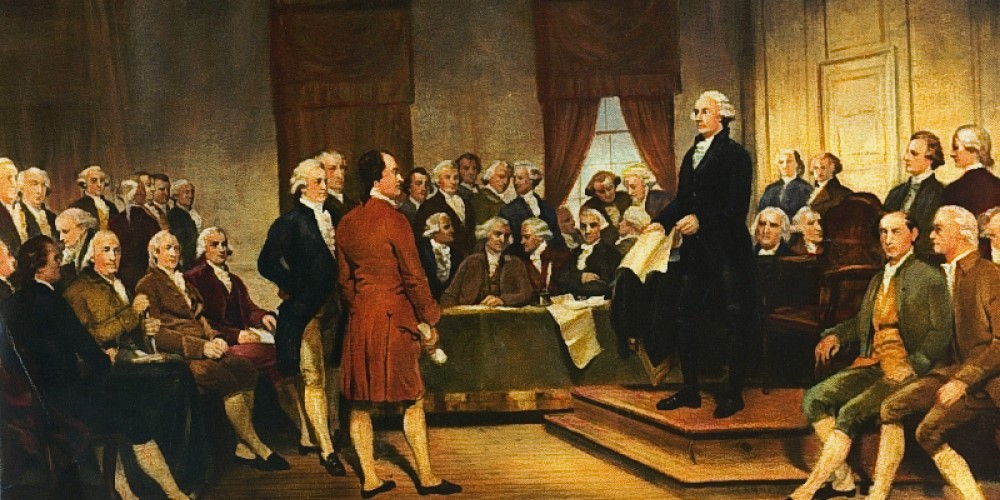Thinking Like a Republican Citizen
When Kansas voters turned down a referendum empowering the state legislature to regulate or ban abortion, many in the press treated it as a rebuke to the Supreme Court’s ruling in Dobbs to overturn Roe v. Wade. But that ruling merely determined that the Court was not the right decision-maker on abortion. Instead, it held that the Constitution left that decision to the states to be determined by state procedures. The Court’s decision was expressly designed to let Kansas voters make the decision, if that was Kansas’s procedure.
Similarly, Governor Rick DeSantis’ removal of a prosecutor who refused to enforce Florida’s law against abortion (and some other criminal laws as well) was treated as simply another flashpoint in the abortion wars. But the central question was not about abortion but about the proper decision-maker, this time under the Florida State Constitution. Does a local prosecutor have the authority to make a blanket decision to refuse to enforce a law or does that usurp the authority of the legislature to make rules?
Confusing questions of substance with questions about appropriate decision-makers undermines republican government.
A Charter for Dividing Authority
What differentiates a simple democracy from a republic is the complex system of checks and balances that the latter employs to promote both liberty and stability. In the federal American Republic, authorities are divided vertically between the states and the national government. Powers are also separated among the President, Congress. and federal Judiciary. The Constitution is in essence a charter for dividing decision-making power.
A decision-making charter requires dispassionate enforcement. The political issues that stir people’s souls are almost always substantive rather than decisional. People march for and against abortion rights, not in defense of the appropriate constitutional entity to make that decision. But the locus of the decision is one of paramount importance to the maintenance of a republic, not least because of the danger that one branch of the federal government or the federal government as a whole will usurp power, creating more dangers of tyranny.
Thus, a central underlying issue for a republic is how to assure that those decisions about the proper authority are made in a neutral, dispassionate way—not swamped by the emotions generated by substantive disagreements. The first line of defense is to choose the most dispassionate institution to make these meta-decisions (i.e., the decisions about who decides). When Alexander Hamilton said that constitutional review should be lodged in the judiciary because the judiciary embodies judgment rather than will, he was emphasizing the comparative dispassion of the third branch.
The focus on judgment is not necessarily an endorsement of originalism, but Hamilton’s view does presuppose that the judiciary can operate on some principles of neutrality that will not be swamped by passions generated by the substantive issue. Thus, any jurisprudential philosophy worth its salt, be it originalism, precedent-following, or more complex theories, like John Hart Ely’s democracy-reinforcing judicial review, claim that they can separate decisions about who should decide from the substantive issues of what is to be decided.
By contrast, critical legal theorists see law as a method for perpetuating unjust hierarchy. Because divided authorities may make it hard to change that hierarchy when an opportunity presents itself they tend to reject the division between substance and the identity of the decision maker. In that sense, they are anti-republican. As this essay was being written, two leftist law professors, one from Harvard and one from Yale, provided evidence of this strain of thinking, calling for a “reorganization of the national legislature” that they admit would not comport with the Constitution in order to achieve progressive objectives of wealth redistribution.
The Need for a Republican Culture
Enforcing neutral principles to keep authority within its proper scope, however, provides only the first line of defense, because the judiciary’s decisions ultimately rest on diffuse popular support. If citizens cannot understand or accept the difference between the identity of the decision maker and the substance of the issue, the judges may lose popular legitimacy and be replaced by those who share the citizen’s view that identity and substance cannot or should not be separated. Republican government thus presupposes a citizen who can understand and uphold this difference.
Citizens can most easily uphold the difference if they have passions for the structure of government as well as passions for substantive issues. For instance, at the beginning of our republic, many Americans were invested emotionally at least as much in their states as in the federal government. People with such attachments could therefore support a rule that gave states as opposed to the nation the power over certain decisions, even if they recognized that a national forum was more likely to give them the substantive outcome they wanted.
But to describe that kind of countervailing passion is to show its inadequacy. The particular cultural attachment to states was historically contingent. Greater mobility and national communications have broken it down. And in any event, it is hard to think of similar emotional attachments that would protect the separation of powers and other complex structures of decisional allocation.
It is thus necessary for citizens to be emotionally invested in the structure itself. But what kind of culture creates such an attachment? The first may be a culture of written language. There is a cultural connection between complex decision-making systems and writing. Constitutional complexity and the dispassion needed to appreciate it are best promoted by writing. Writing slows us down and prompts second thoughts. Such deliberation can help distance us from the impulsiveness that prioritizes substance over procedure. It hardly seems accidental that the first enduring republican structures in nations with a relatively widespread franchise accompanied the rise of mass literacy and the widespread circulation of written documents.
But this cultural root of separating decisional process from substance is in decline. To be sure, citizens are still literate, but they do not consume their information through the kind of discursive mode familiar to the early republic. We take our information from television and internet videos that emphasize emotion over dispassion. 280-character tweets are hardly the medium to demarcate and protect the line between process and substance.
The other important factor is a culture of constitutionalism that values the constitutional decisional structure even when it impedes one’s substantive desires. There was once such a strong structure of constitutionalism, partly driven by the same fears of government tyranny that animated the Framers. Citizens cared about diffusing power and thus who was making the decision, because they believed the concentration of power was more likely to harm than help them.
That sense was translated into an education with a strong focus on civics. My high school American history class spent an enormous amount of time on the Constitution, considering not only judicial review in Marbury but also the other leading early American Supreme Court cases like Charles River Bridge. My impression from talking with my law students is that the educational foundation of a culture of constitutionalism has disappeared, and been replaced by a hazy sort of social history, sometimes driven by the politics of identity. Just as with critical theory, a historical focus solely on the perceived injustices that government needs to end, rather than the necessarily constrained processes to correct them, gives short shrift to the values behind republican diffusion of power.
Even beyond education, the nation’s culture once focused more on the Constitution than it does today. In A Machine That Would Go of Itself, Michael Kammen describes parades that featured the Constitution, as religious processions once would celebrate the core documents and symbols.
Decline of a Constitutional People
That sense of celebration has disappeared. Part of the decline is due to the many alternative pursuits in the modern world. Entertainment is more varied and interesting, yet it takes away time from a focus on our republican foundation. But the more important problem has been the greater cynicism about the Constitution. That began a hundred years ago, when Charles Beard attacked the document as a method by which the rich consolidated power. Today the “1619 Project” reflects the more typical assault: the Founding was about the preservation of slavery. It is hard to defend the intricacies of the Constitution’s decisional procedures if those procedures are a mask for substantive evil. In a sense, these critiques are popular versions of the critical legal theorists’ view of law. Both see the Constitution, including its decision-making structures as perpetuating unjust hierarchies. They need to be dismantled, not respected.
Political scientists also publicize a view of the Court that makes little distinction between the appropriate decision-maker and substantive decision. For instance, a recent survey evaluated the Court’s recent decisions, but did not consider jurisprudential issues at all. It asked no questions about whether the ruling determined the right decision maker.
The loss of this diffuse understanding is a great threat to the Court. While Congress overwhelmingly defeated court-packing when FDR proposed it, it enjoys more support in Congress today. As I have noted before, an instance of substantial court-packing would create a cycle of court packing. It would also gravely weaken if not destroy republican government, because a packed Court under the shadow of more court packing would be more likely to uphold the distinction between the identity of the decision-maker and the substantive decision that is at the heart of Republican government.

